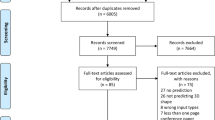Abstract
Confounding bias is a crucial problem when applying machine learning to practice, especially in clinical practice. We consider the problem of learning representations independent to multiple biases. In literature, this is mostly solved by purging the bias information from learned representations. We however expect this strategy to harm the diversity of information in the representation, and thus limiting its prospective usage (e.g., interpretation). Therefore, we propose to mitigate the bias while kee** almost all information in the latent representations, which enables us to observe and interpret them as well. To achieve this, we project latent features onto a learned vector direction, and enforce the independence between biases and projected features rather than all learned features. To interpret the map** between projected features and input data, we propose projection-wise disentangling: a sampling and reconstruction along the learned vector direction. The proposed method was evaluated on the analysis of 3D facial shape and patient characteristics (N = 5011). Experiments showed that this conceptually simple method achieved state-of-the-art fair prediction performance and interpretability, showing its great potential for clinical applications.
Access this chapter
Tax calculation will be finalised at checkout
Purchases are for personal use only
Similar content being viewed by others
Notes
- 1.
Non-orthogonal basis vectors.
References
Tommasi, T., Patricia, N., Caputo, B., Tuytelaars, T.: A Deeper look at dataset bias. In: Csurka, G. (ed.) Domain Adaptation in Computer Vision Applications. ACVPR, pp. 37–55. Springer, Cham (2017). https://doi.org/10.1007/978-3-319-58347-1_2
Adeli, E., et al.: Chained regularization for identifying brain patterns specific to HIV infection. Neuroimage 183, 425–437 (2018)
Pourhoseingholi, M.A., Baghestani, A.R., Vahedi, M.: How to control confounding effects by statistical analysis. Gastroenterol. Hepatol. Bed Bench 5, 79–83 (2012)
Zhou, B., Bau, D., Oliva, A., Torralba, A.: Interpreting deep visual representations via network dissection. IEEE Trans. Pattern Anal. Mach. Intell. 41(9), 2131–2145 (2019)
Balakrishnan, G., **ong, Y., **a, W., Perona, P.: Towards causal benchmarking of bias in face analysis algorithms. In: Vedaldi, A., Bischof, H., Brox, T., Frahm, J.-M. (eds.) ECCV 2020. LNCS, vol. 12363, pp. 547–563. Springer, Cham (2020). https://doi.org/10.1007/978-3-030-58523-5_32
**e, Q., Dai, Z., Du, Y., Hovy, E., Neubig, G.: Controllable invariance through adversarial feature learning. In: NIPS (2017)
Adeli, E., et al.: Representation learning with statistical independence to mitigate bias. In: WACV (2021)
Louizos, et al.: The variational fair autoencoder. In: ICLR (2016)
Creager, E., et al.: Flexibly fair representation learning by disentanglement. In: PMLR (2019)
Alemi, A.A., Fischer, I., Dillon, J.V., Murphy, K.: Deep variational information bottleneck. In: ICLR (2017)
Botros, P., Tomczak, J.M.: Hierarchical vampprior variational fair auto-encoder. ar**v preprint ar**v: 1806.09918 (2018)
Jaddoe, V.W., Mackenbach, J.P., Moll, H.A., Steegers, E.A., Tiemeier, H., Verhulst, F.C., et al.: The generation R study: study design and cohort profile. Eur. J. Epidemiol. 21, 475–484 (2006)
Vellido, A.: The importance of interpretability and visualization in machine learning for applications in medicine and health care. Neural Comput. Appl. 32(24), 18069–18083 (2019). https://doi.org/10.1007/s00521-019-04051-w
Härdle, W.K., Simar, L.: Canonical correlation analysis. In: Applied Multivariate Statistical Analysis, pp. 361-372. Springer, Heidelberg (2003).https://doi.org/10.1007/978-3-540-72244-1_14
3dMD. https://3dmd.com/. Accessed Feb 3 2021
Booth, J., Roussos, A., Ponniah, A., Dunaway, D., Zafeiriou, S.: Large scale 3D morphable models. Int. J. Comput. Vis. 126, 233–254 (2017)
Muggli, E., Matthews, H., Penington, A., et al.: Association between prenatal alcohol exposure and craniofacial shape of children at 12 months of age. JAMA Pediatr. 171(8), 771–780 (2017)
Gong, S., Chen, L., Bronstein, M., Zafeiriou, S.: SpiralNet++: a fast and highly efficient mesh convolution operator. In: ICCVW (2019)
Zhao, Q., Adeli, E., Honnorat, N., Leng, T., Pohl, K.M.: Variational autoencoder for regression: application to brain aging analysis. In: Shen, D., et al. (eds.) MICCAI 2019. LNCS, vol. 11765, pp. 823–831. Springer, Cham (2019). https://doi.org/10.1007/978-3-030-32245-8_91
Zhao, Q., Adeli, E., Pohl, K.M.: Training confounder-free deep learning models for medical applications. Nat. Commun. 11, 6010 (2020)
Belghazi, M.I., et al.: Mutual information neural estimation. In: ICML (2018)
Tobias, M., et al.: Cross-ethnic assessment of body weight and height on the basis of faces. Pers. Individ. Differ. 55(4), 356–360 (2013)
Author information
Authors and Affiliations
Corresponding author
Editor information
Editors and Affiliations
1 Electronic supplementary material
Below is the link to the electronic supplementary material.
Rights and permissions
Copyright information
© 2021 Springer Nature Switzerland AG
About this paper
Cite this paper
Liu, X., Li, B., Bron, E.E., Niessen, W.J., Wolvius, E.B., Roshchupkin, G.V. (2021). Projection-Wise Disentangling for Fair and Interpretable Representation Learning: Application to 3D Facial Shape Analysis. In: de Bruijne, M., et al. Medical Image Computing and Computer Assisted Intervention – MICCAI 2021. MICCAI 2021. Lecture Notes in Computer Science(), vol 12905. Springer, Cham. https://doi.org/10.1007/978-3-030-87240-3_78
Download citation
DOI: https://doi.org/10.1007/978-3-030-87240-3_78
Published:
Publisher Name: Springer, Cham
Print ISBN: 978-3-030-87239-7
Online ISBN: 978-3-030-87240-3
eBook Packages: Computer ScienceComputer Science (R0)





